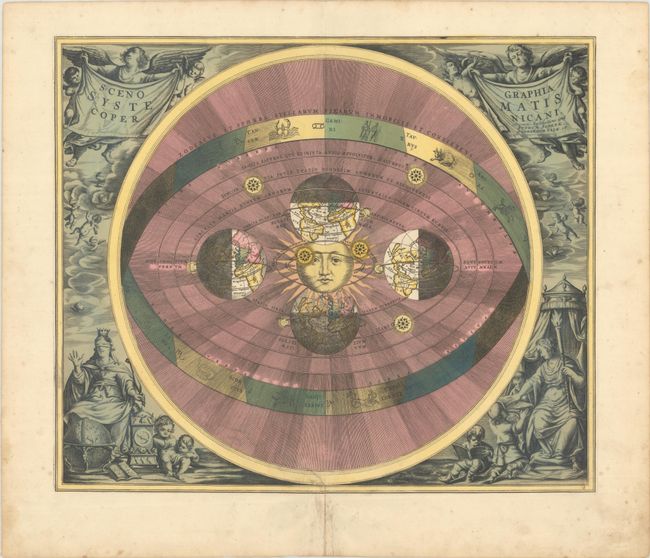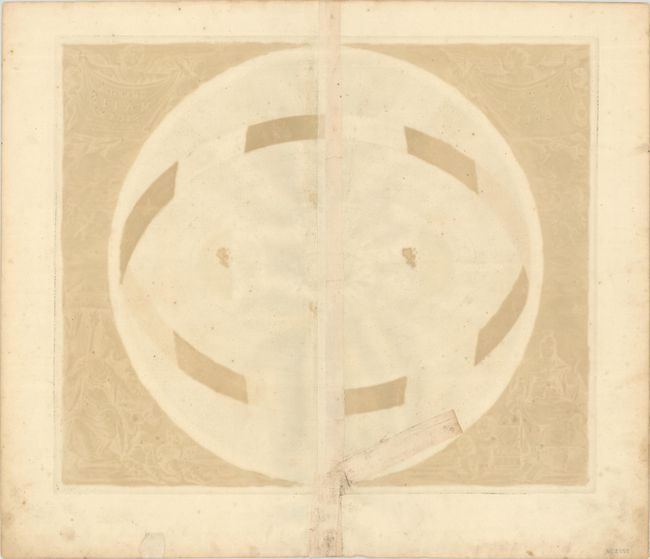Subject: Solar System
Period: 1708 (published)
Publication: Atlas Coelestis seu Harmonia Macrocosmica
Color: Hand Color
Size:
19.9 x 16.8 inches
50.5 x 42.7 cm
The Dutch-German mathematician and cosmographer Andreas Cellarius is best known for his spectacular celestial atlas, the Harmonia Macrocosmica. His atlas contained a description of ancient and contemporary astronomy including the theories of Ptolemy, Copernicus, and Tycho Brahe. The atlas was illustrated with twenty-nine engraved plates that are among the most beautiful celestial charts ever made. The charts include illustrations of the heavens and diagrams of the orbits of the Sun, Moon, and planets according to the different cosmological theories. They were richly adorned with elaborate cartouches and baroque elements such as putti in clouds, shells, garlands, as well as portraits of famous astronomers and astronomical instruments. The Harmonia Macrocosmica was published in 1660, and reissued in 1661 by the Amsterdam publisher Johannes Jansson as a supplement to his Atlas Novus. The plates were reissued again in 1708 by the Amsterdam publishers Gerard Valk and Petrus Schenk.
This beautiful chart depicts Copernicus' heliocentric theory of the universe. A human-faced sun appears at the center, surrounded by four views of the earth pointed at each equinox. North America is depicted with California as an island. Other planets are also depicted in concentric circles around the sun, with the outer ring representing the signs of the zodiac. The Baroque vignettes framing the chart feature putti, a blindfolded queen, a celestial globe, and a clock.
References: Kanas, pp. 191-94; Van der Krogt (Vol. I) #HM05:1.
Condition: B+
A sharp impression with full contemporary color on a bright sheet with marginal soiling and an archivally repaired tear that extends 5" into image at bottom.



